
U.S. Department of Transportation
Federal Highway Administration
1200 New Jersey Avenue, SE
Washington, DC 20590
202-366-4000

Innovations for a Nation on the Move
State Transportation Innovation Councils Deploy Homegrown Innovations
Arizona and Maryland State Transportation Innovation Councils Demonstrate Success
Crowdsourcing for Advancing Operations
Next-Generation Traffic Incident Management
The Federal Highway Administration kicked off round six of the Every Day Counts (EDC-6) program with a Virtual Summit introducing the ready-to-deploy innovations the agency is promoting in 2021 and 2022.
EDC-6 features strategies to enhance engagement with the people who build and use the transportation infrastructure, products to save money on preserving and repairing bridges and roads, and processes to save time on project delivery and incident management. EDC-6 teams are ready to provide technical assistance and training to facilitate adoption of seven innovations:
Crowdsourcing for advancing operations helps agencies apply crowdsourced data integrated from multiple streams to optimize roadway use for reduced congestion and increased safety and reliability.
e-Ticketing and digital as-builts improve the tracking, exchange, and archiving of materials tickets and enhance the future usability of as-built plans for operations, maintenance, and asset management, which can result in increased project safety and quality.
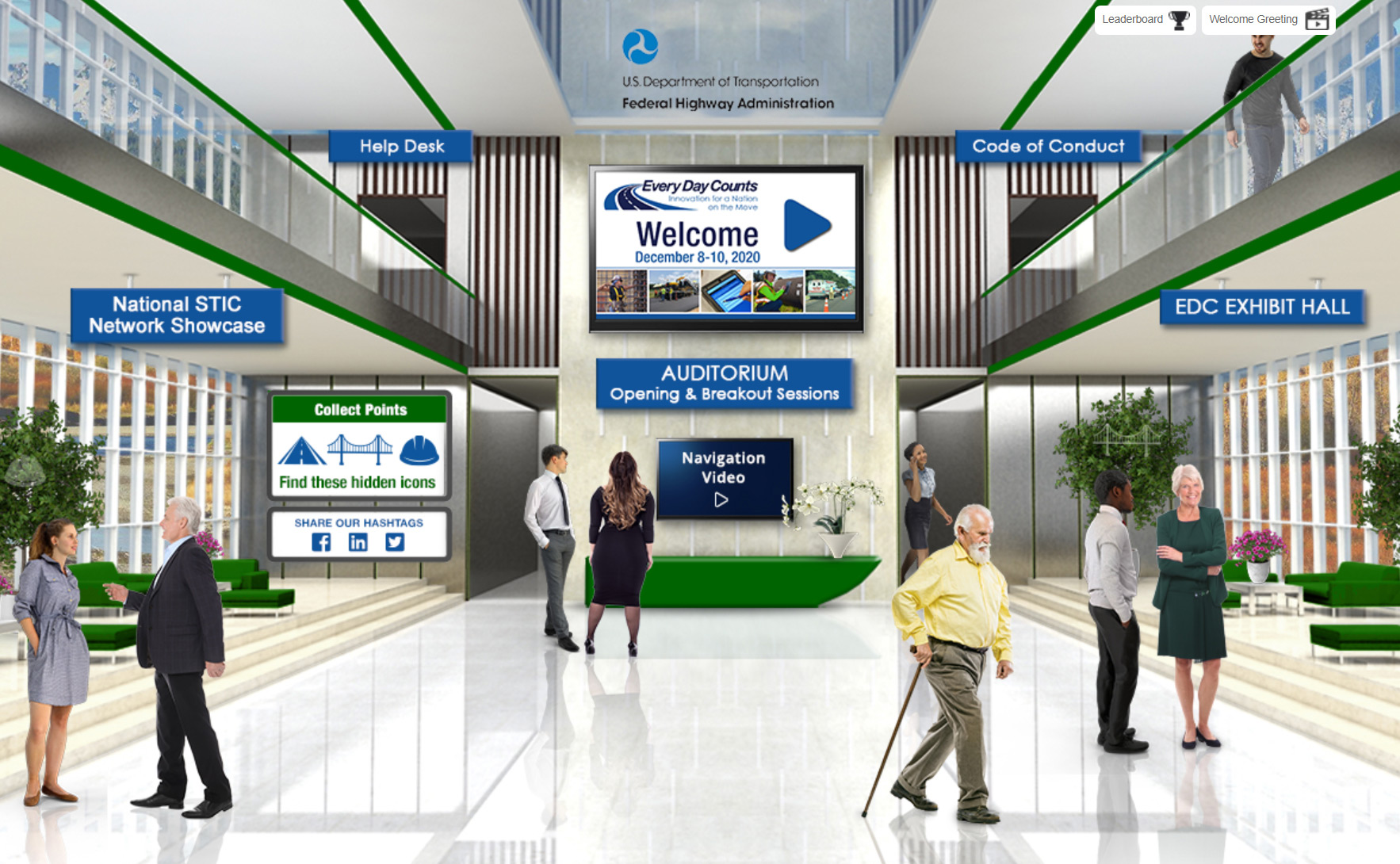
EDC-6 Virtual Summit content is available for on-demand viewing through December 2021. Register for the event and click on the Auditorium button to watch EDC-6 presentations and the EDC Exhibit Hall button to access virtual exhibit booths on EDC innovations.
Virtual public involvement supplements face-to-face information sharing with technology platforms that increase the variety of methods agencies use to inform the public, encourage participation, and receive input on transportation project planning and development.
Next-generation traffic incident management offers new tools, data, and training mechanisms that can help State and local agencies shorten the duration and impact of roadway incidents and enhance safety for motorists, crash victims, and responders.
As the demand for highway construction, maintenance, and operations workers grows, strategic workforce development strategies help the transportation community identify, train, and place workers in jobs that support the Nation’s highway system.
Targeted overlay pavement solutions for asphalt and concrete pavements can improve performance, lessen traffic impacts, and reduce the cost of pavement ownership, helping agencies maximize their investment and ensuring safer, longer lasting roadways.
When used in bridge preservation and repair applications, ultra-high performance concrete offers superior strength, enhanced performance, and improved life-cycle cost over traditional methods.
The National State Transportation Innovation Council (STIC) Network Showcase at the EDC-6 Virtual Summit celebrated innovations developed across the country to save lives, time, and resources. The showcase gave the 245 innovations a wider audience to expand their use and impact.
Among the homegrown innovations are two tools the Missouri Department of Transportation (MoDOT) fashioned to increase safety. The tailgate lever opens a truck tailgate easily and keeps it propped open securely. In the past, there had been incidents when tailgates closed unexpectedly, leading to hand and finger injuries. The wing camera mounts to the top of the passenger side mirror of a snowplow, allowing the operator a view over the front-mounted wing plow to see cars or other obstructions while plowing. This keeps the public and MoDOT drivers safer and reduces claims for damage from plows.
The city of Wilmington, NC, devised another safety solution, temporary roundabouts made of traffic cones to better protect drivers and police officers at four-way intersections after natural disasters such as hurricanes. Typically, four officers are assigned to intersections where traffic lights are out. Now, one officer can be stationed at an intersection with cones set up around the police car as a barrier warning drivers to slow down and go around. No crashes have occurred at intersections with temporary roundabouts, and assigning one officer to work a roundabout makes more officers available for other duties.
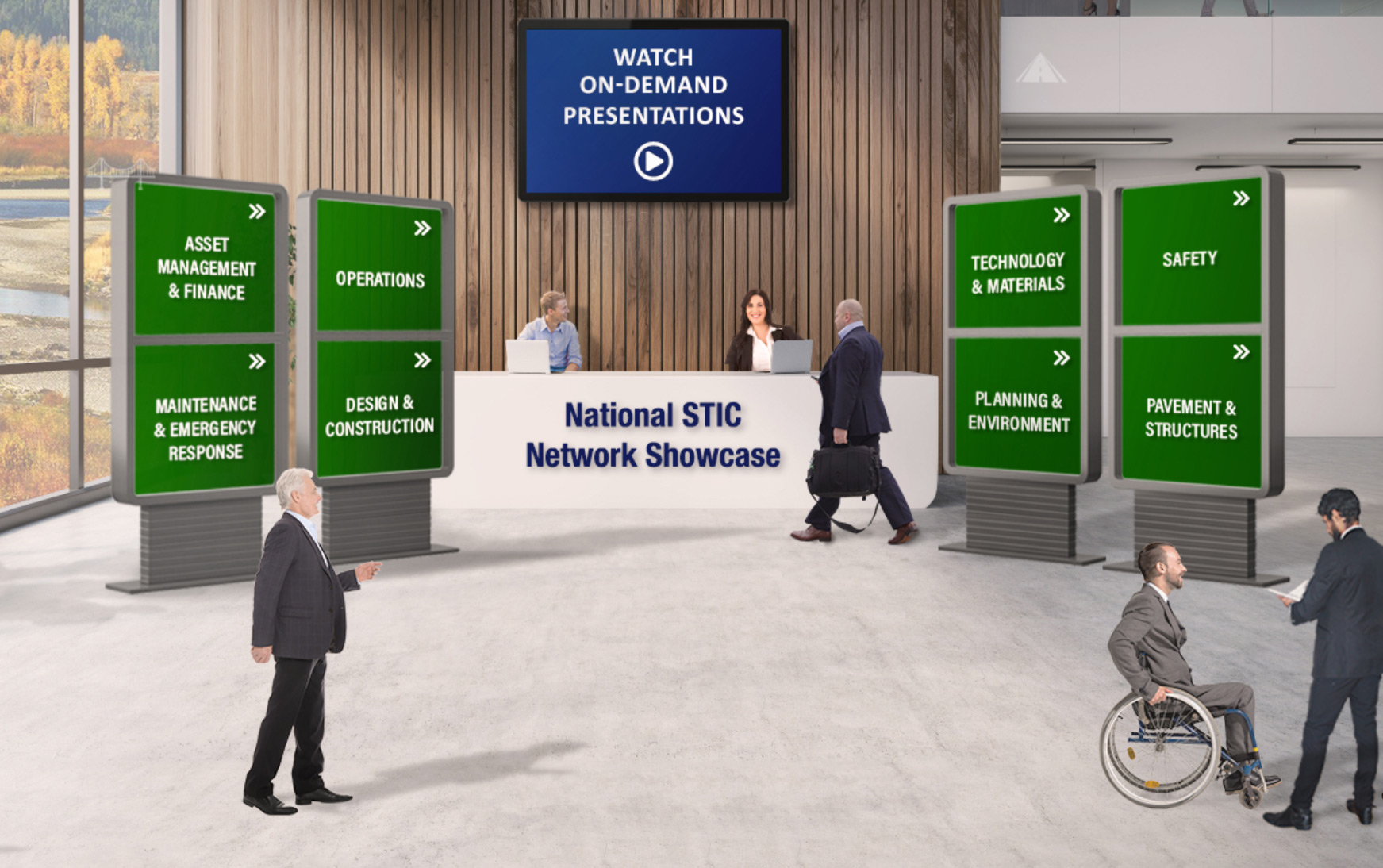
See all 245 homegrown innovations in the EDC-6 Virtual Summit platform. After registering, click on the National STIC Network Showcase button to access on-demand presentations, and click on each category to read about the innovations.
The California Department of Transportation (Caltrans) deployed an innovative pavement material when it repaved a highway section with a plasticized binder containing recycled plastic bottles. Caltrans is testing the material for use throughout the State on projects using a cold-in-place recycling process. A 1-mile pavement segment using this treatment recycles 150,000 plastic bottles. The plastic pavement has been found in past tests to be more durable than hot-mix asphalt pavement. In addition to removing plastic from the waste stream, plastic pavement could reduce material costs by 25 percent and its durability could reduce maintenance costs.
The Nebraska Department of Transportation (NDOT) used an innovative finance approach to fund the $350 million Lincoln South Beltway, one of the largest capital improvement projects the agency has ever undertaken. Because Nebraska is a pay-as-you-go State, NDOT normally would use multiple construction contracts as annual funding permitted on a project of this size, likely over an 8-year period. Instead, NDOT will use deferred contract payment certificates (DCPC) to allow completion of the project in only 3 years. Issued as the contractor earns amounts for work completed, DCPC obligate NDOT to pay for the finished work. NDOT will make quarterly payments of up to $7.5 million until payment is complete.
State Transportation Innovation Councils (STIC) in Arizona and Maryland received 2020 STIC Excellence Awards for demonstrating success in fostering a strong culture of innovation in their transportation communities.
The American Association of State Highway and Transportation Officials and Federal Highway Administration sponsor the annual award to promote innovation nationwide. The latest awards mark the fifth time the two organizations have collaborated to recognize excellence in STICs.
The Arizona Council for Transportation Innovation (ACTI) uses a three-pronged approach of diverse membership, ongoing outreach, and a long-range perspective to advance innovation. ACTI leverages perspectives from public agencies and private organizations to better evaluate and capitalize on innovation opportunities.
To plant the seeds for innovation, ACTI’s outreach includes Innovation Exchange Days on Every Day Counts (EDC) innovations and future trends in transportation. The council selects innovations that are a good fit for Arizona projects and communities, brings together diverse champions who see the innovations through to deployment, and provides training and funding to support adoption of the innovations.
ACTI is reaping the fruits of its efforts. Arizona has innovative projects statewide, ACTI implementation teams have developed and expanded innovative tools, and specifications spearheaded by ACTI are now used as standard practice by the Arizona Department of Transportation (ADOT) and its partners.
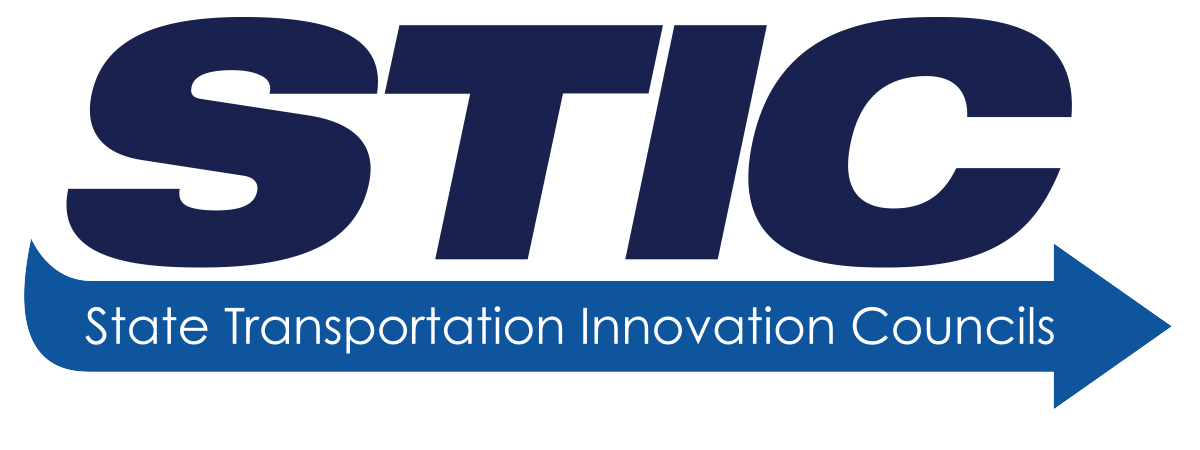
The ACTI team developed an AZ STEP website with an interactive countermeasure selection tool based on FHWA’s “Guide for Improving Pedestrian Safety at Uncontrolled Crossing Locations.” The website provides links to Arizona installation examples, countermeasure illustrations, and references to laws and guidance for treatment designs.
ADOT and regional planning agencies are developing Sun Cloud, a data portal serving the transportation planning needs of Arizona’s Sun Corridor. Funded with an Accelerated Innovation Deployment (AID) Demonstration grant award, this data portal will improve the accessibility, usability, and quality of data and analytical tools vital to transportation planning in the five-county region.
The Sun Corridor Value Impact Analysis project combines two travel demand models of three metropolitan planning organizations to quantify the economic impact of transportation investments. The more thorough understanding of the financial benefits of transportation investments that the analysis tool provides will better equip the region to leverage investments beyond the transportation sector to stimulate economic growth.
The Maryland Transportation Innovation Council is a multistakeholder leadership group that embraces innovation at a strategic level and creates a culture of innovation. The Maryland STIC credits having a Maryland Department of Transportation (MDOT) employee dedicated to overseeing innovation deployment as a key factor in the STIC’s success. This staff member co-chairs the Maryland Quality Initiative (MdQI) Innovation Subcommittee and provides a central point of contact for innovation-focused programs such as EDC, AID Demonstration, and STIC Incentive.
The Maryland STIC and MdQI, a forum that fosters quality improvement in transportation, launched the MdQI Innovation Subcommittee to facilitate rapid implementation of technology and techniques in the public and private sectors. The subcommittee helps solicit innovations, inviting individuals and teams to submit ideas for review and making recommendations to the Maryland STIC. The subcommittee created a website to share information and resources on advancing innovation.

The Maryland Quality Initiative created this commemorative book on its 25th anniversary to celebrate the Maryland transportation industry’s commitment to quality planning, design, construction, and maintenance.
The culture of innovation has inspired innovative efforts at MDOT, such as Project Green Light in which employees pitched ideas in a friendly presentation environment. The ideas focused on customer service, innovation, modernization, and communication, and winning applicants were empowered to implement their innovations.
MDOT also held an Operations Innovation Showcase to highlight innovations developed by staff throughout the State. Employees shared with their colleagues information on equipment modifications to save time and money, the use of unmanned aerial systems to survey landslides and pavement conditions, and temporary rumble strips to enhance work zone safety.
The Maryland STIC has advanced 35 EDC initiatives to make innovation a permanent tool in the project delivery toolbox. The STIC has used STIC Incentive funding on projects to implement accelerated bridge construction, traffic incident management, e-Construction, pavement preservation, advanced geotechnical methods in exploration, and STEP.
Visit the STIC Excellence Award webpage to learn about STIC Excellence Award winners over the past 5 years.
Contact Sara Lowry of the FHWA Center for Accelerating Innovation for information on the STIC Excellence Award.
Crowdsourcing is a low-cost, powerful tool that leverages the public to collect data to improve traveler information, traffic incident management, signal timing, weather-responsive management, work zone management, and more. Crowdsourcing overcomes gaps in geographic coverage of traditional intelligent transportation system (ITS) monitoring systems, lags in information timeliness, monitoring equipment costs, and jurisdictional data stovepipes.
In Every Day Counts round five (EDC-5), most participating agencies focused on improving one aspect of operations using crowdsourced data, most commonly traveler information and incident management. The EDC round six (EDC-6) initiative on crowdsourcing for advancing operations helps agencies transform crowdsourcing from single-source, single-purpose data use into a system that gathers multiple streams of data and integrates the data for use in multiple areas to improve real-time operations and operational systems planning.
“Most agencies have the potential for far greater benefits from crowdsourcing,” said James Colyar, Federal Highway Administration transportation specialist and co-leader of the EDC-6 team. “The EDC-6 focus is on deepening crowdsourcing roots for more fruitful benefits, including evolving to modern data management practices, integrating crowdsourced and traditional transportation data, analyzing archived data to improve operational planning and performance management, and expanding real-time application and types of crowdsourced data.”
Agencies such as the Indiana Department of Transportation (INDOT) have found that even a single integrated, archived, and shared crowdsourced data stream can transform traffic operations. “Crowdsourced data has proven to be extremely versatile and INDOT is very pleased by the savings in time and money it has enabled across the department,” said Ed Cox, INDOT’s engineering director of traffic management.
INDOT processes speed data from 6,500 interstate and 35,000 non-interstate segments every minute to provide real-time dashboards for incident detection at traffic management centers (TMC). TMC operators also use the dashboards to monitor work zone delays, and law enforcement officers at work zone sites can monitor queues and identify potential crashes. The data feed real-time travel estimates for over 200 routes through dynamic message signs. In all, INDOT uses vehicle probe data for nearly a dozen operational capabilities.
INDOT stores the vehicle probe data and enables engineers to query the data for multiple purposes. Using the data, traffic engineers now prioritize corridors for signal retiming rather than simply retiming on a 3-year cycle. The data supplant costly floating car studies to confirm signal timing improvements. Retiming the 9-mile U.S. 31 arterial corridor, for example, saved 116,000 hours a year in travel time, equivalent to $2.75 million.
By using vehicle probe data, INDOT has begun retiring ITS devices and will eliminate 50 percent of roadside sensors. The agency will also forego a planned ITS field device expansion. INDOT will save $28 million in ITS infrastructure deployment costs and $750,000 per year in communications service and maintenance costs by using probe data.
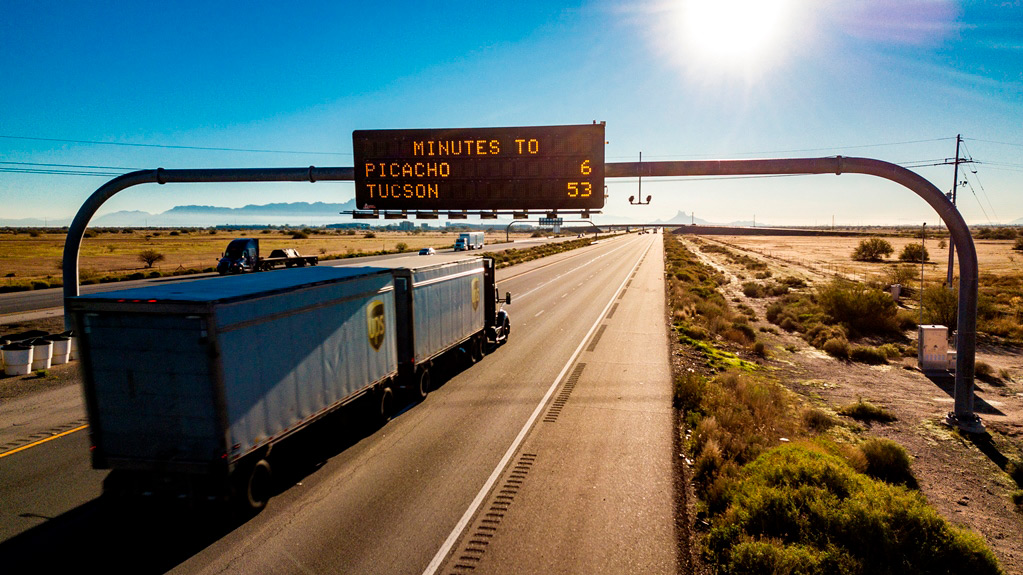
Agencies use crowdsourced data to improve real-time traveler information, such as dynamic message signs for motorists.
In Every Day Counts round six, agencies can benefit from deepening crowdsourcing roots:
Adding data sources and applications. The Virginia Department of Transportation (VDOT) collects, integrates, and uses multiple crowdsourced data. VDOT applies vehicle probe and free navigational app data to improve incident detection, share quantitative and comparative travel times through dynamic message signs and its 511 app, evaluate work zone queues, and better track performance. The agency also uses the data for speed enforcement and speed limit studies.
Improving data management. The Kentucky Transportation Cabinet (KYTC) is transitioning to a modern data management architecture that supports multiple operational capabilities and research. KYTC has seen cost savings and added functionalities by integrating vehicle probe data, weather data, navigation app data, and automatic vehicle location data with its linear referencing system in real time.
Sharing and integrating data. The Delaware Department of Transportation (DelDOT) collects data through crowdsourcing for agency use and provides data to the traveling public. DelDOT shares crowdsourced event data from Waze through its 511 app and encourages travelers to report issues through the app to help identify hazards.
Improving archived data use. Lake County, IL, records event data such as crashes and potholes through the Waze Connected Cities partnership. The county also archives travel time data on a network of 600 road segments through the Waze Traffic View tool. This allows signal coordination and signal timing studies on demand. Lake County expects a $5 million benefit over the next 5 years by using verified crowdsourced data versus more expensive manual signal timing studies.
View the “Adventures in Crowdsourcing” webinar series for innovative applications and best practices to help agencies get the greatest value from crowdsourced data.
Contact James Colyar of the FHWA Office of Operations or Greg Jones or Ralph Volpe of the FHWA Resource Center for information, technical assistance, and training, including customized virtual workshops.
An estimated 6 million collisions reported by police, 32 million motorist assists, and 174,000 vehicle fires occur every year in the United States. Each incident places responders and motorists at high risk of secondary collisions (collisions that occur at the scene or in the queue of a prior incident), cause congestion, and negatively impact the economy and the public’s quality of life. Traffic incident management (TIM) has become the state of the practice to effectively reduce the dangers and mitigate the impacts of incidents.
Next-generation traffic incident management (NextGen TIM) focuses on working with State, local, and Tribal partners to improve TIM on all roadways by integrating proven, yet underutilized, innovative technology, data, and training strategies. In Every Day Counts round six, these entities are poised to take TIM to the next level using innovative approaches that will continue to improve safety and travel reliability and save lives, time, and money.
While TIM efforts have assumed focus on high-speed roadways, the concepts of TIM are applicable to all roads. NextGen TIM applies TIM to local roadways by encouraging the application of low-cost solutions like stakeholder meetings, development of policies and procedures, and participation in TIM training.
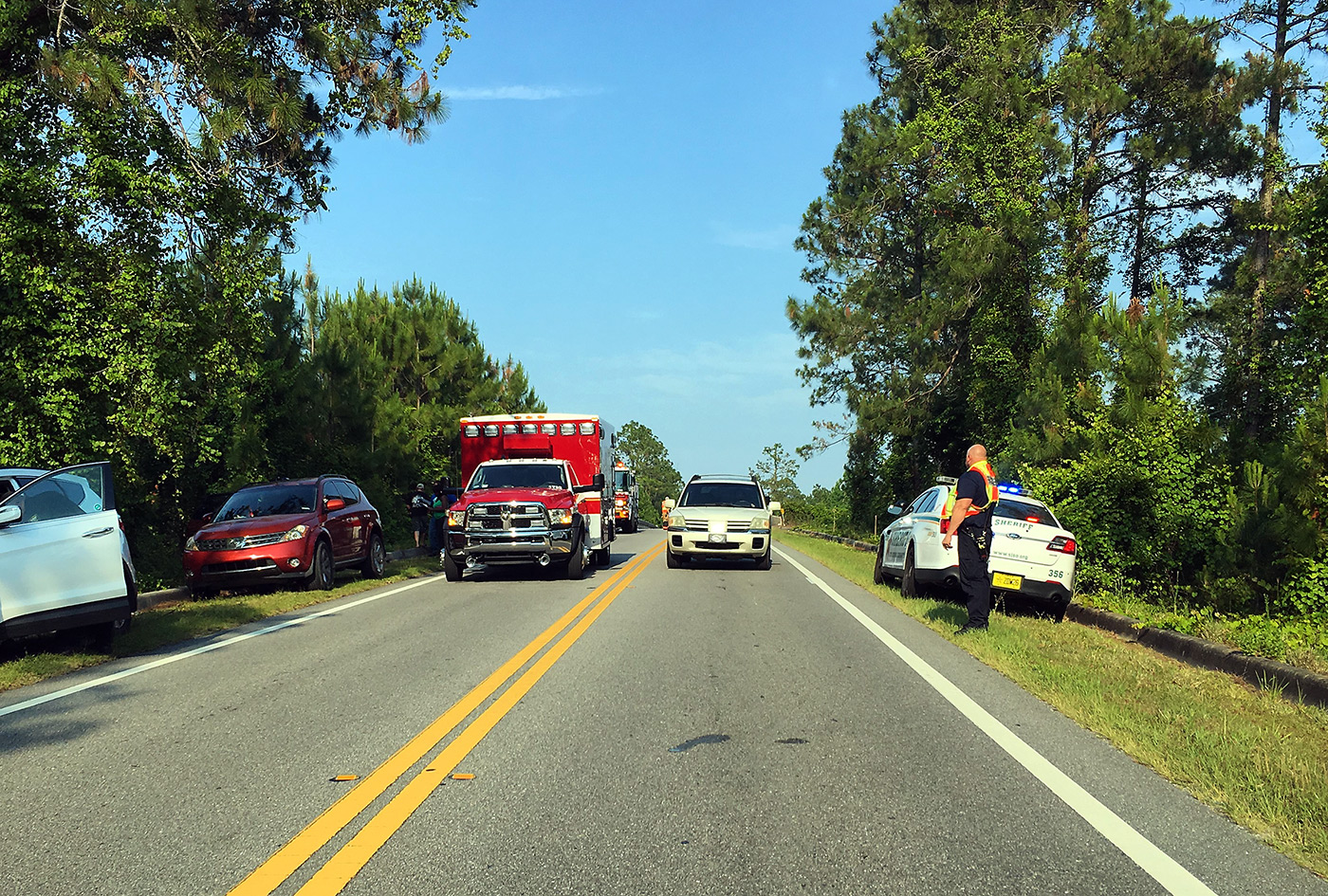
TIM strategies are applicable on local as well as high-speed roads.
When officers from the Oro Valley Police Department in Arizona became focused on TIM practices and began tracking TIM-related metrics in computer-aided dispatch (CAD), roadway and incident clearance times were reduced by 32 percent during the first 6 months of 2018.
NextGen TIM continues to promote TIM training with innovative remote delivery approaches and new content. NextGen TIM strives to institutionalize training through policies, ensuring training will continue even after TIM training champions move on. Technology-focused training will be available to supplement the National Responder Training Program. TIM-related lessons will provide information on integrated CAD, unmanned aerial systems (UAS), connected and automated vehicles, TIM data collection and use, and traffic management centers (TMCs).
The Arizona Highway Patrol estimates that by implementing training and other TIM strategies, it saves 44,000 hours of patrol time per year, the equivalent of about 25 full-time officers.
NextGen TIM focuses on advancing the collection, analysis, and use of incident data. With better data and analytics, agencies can quantify program performance, demonstrate program effectiveness, and improve TIM planning and resource management. TIM data can come from public safety CAD system time stamps, police traffic crash reports, or TMCs. Real-time data dashboards are an effective way to analyze and present data to promote organizational goals.
Georgia reduced clearance times for commercial vehicle crashes by 82 percent with data from its Towing Recovery Incentive Program. Puerto Rico deployed a mobile app for safety service patrols to augment the exchange of incident data and accurate reporting.
Crowdsourced data, which can be obtained whenever and wherever people travel, is another data type that is improving TIM. With crowdsourced data, agencies can detect and verify incidents and manage incident-related queues.
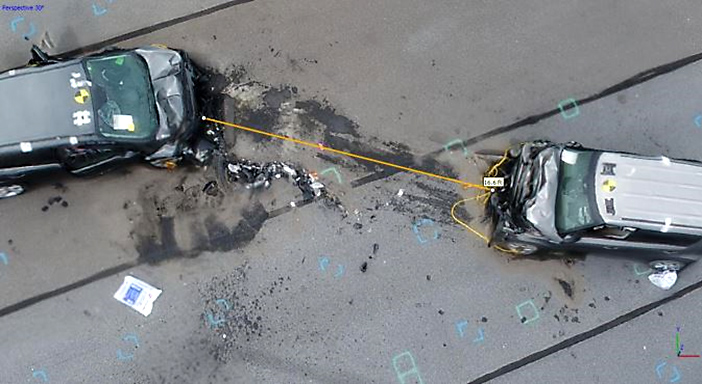
Using measurements from photos captured by unmanned aerial systems accelerates crash investigations.
CAD integration facilitates the timely sharing of information between public safety and transportation agencies and improves coordination of resources, traveler information, and safety. CAD integration streamlines and improves analysis and reporting of TIM performance measures and reduces time for law enforcement agencies to notify the public. CAD integration also allows departments of transportation (DOTs) to mobilize resources faster, improve traveler information, and enhance the depth and accuracy of data for performance analysis.
UAS reduce responder time on incident scenes, accelerate crash investigations, and offer a cost-effective measuring and mapping alternative. UAS are remotely controlled by a pilot and can be easily flown over a traffic crash scene to capture high-definition images. UAS image processing is capable of photogrammetry, in which measurements can be taken from the images. Using known measurements in the UAS image allows measurement between any two points in the image. In North Carolina, the Highway Patrol and DOT found that UAS mapped a two-car crash in 25 minutes, while three-dimensional laser mapping required 1 hour and 51 minutes.
Additional technologies include video sharing and alert systems. Video sharing allows cameras mounted on service patrol vehicles to stream images from incident scenes to TMCs, as well as TMC images back to responder vehicle computers. Responder-to-vehicle alert systems improve safety by increasing advance warning of incidents. When responder vehicles are stopped along roadways, approaching drivers can be warned through in-vehicle navigation providers that receive alerts when responder vehicle emergency lighting is activated.
View the “Talking TIM” webinar series for examples of how agencies apply strategies to improve TIM programs.
Contact Paul Jodoin or Jim Austrich of the Federal Highway Administration Office of Operations for NextGen TIM information, technical assistance, and training, including workshops and peer exchanges.
For more than a decade, the Federal Highway Administration’s Every Day Counts (EDC) program has promoted proven but underused innovations that enhance roadway safety, improve project delivery, and reduce traffic congestion. Across the country, highway agencies attest to the value of adopting these new technologies and processes, along with a cultural change in how they deploy innovation. In 2021, as the transportation community participates in EDC round six, Innovator is featuring articles that reflect on what the program has accomplished.
Safety is the top priority of the U.S. Department of Transportation and highway agencies throughout the country. From the EDC program’s early years, FHWA has promoted a portfolio of tools and resources to reduce fatalities and serious injuries across the transportation system.
As a result of EDC, the use of informed decision making through data-driven safety analysis (DDSA) is now widespread. EDC also expanded deployment of safety countermeasures such as the SafetyEdgeSM, high-friction surface treatments (HFST), road diets, and innovative intersections.
The EDC focus on DDSA encouraged transportation agencies to adopt the use of advanced data analysis approaches to more accurately predict the safety impacts of projects. While traditional analysis relies on subjective or limited quantitative measures of safety performance, DDSA applies modern software tools and methods to analyze crash, roadway, and traffic volume data. These tools quantify the expected safety impact of each decision in the project development process so agencies can make more informed choices and optimize investments.
Through EDC, FHWA’s marketing and outreach approaches—including webinars, videos, infographics, how-to guides, and a DDSA toolbox—expanded the reach of DDSA to many audiences. In addition to offering technical assistance and training to aid State agencies in incorporating DDSA into processes and policies, the EDC team helped local agencies gain proficiency with DDSA technology and create local road safety plans.
“EDC provided a platform to effectively communicate about DDSA,” said Jerry Roche, FHWA safety engineer and an EDC DDSA team leader. “Unlike other safety countermeasures that are widely known, intuitive, and can be easily described and illustrated, DDSA was a fairly new approach that was hard to describe, difficult to illustrate, and, at first, counterintuitive.”
EDC supplied a national forum to tell transportation professionals and elected officials the story of DDSA—what it is, why it is important, and how it maximizes transportation investments to save lives and prevent injuries. EDC shared best practices and case studies on how DDSA has been successfully implemented in project development and safety management decision making.
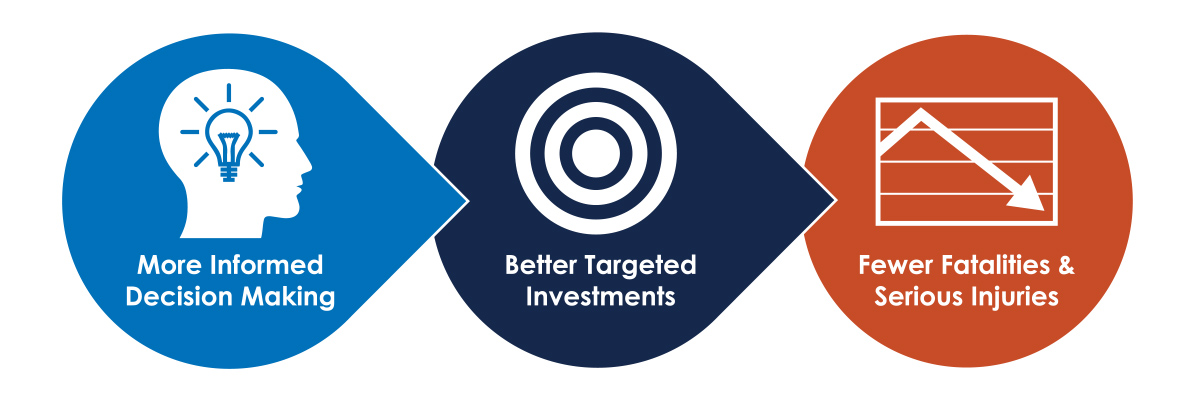
Every Day Counts expanded the use of data-driven safety analysis to enable agencies to target investments with more confidence and reduce crashes.
In addition to expanding DDSA use, EDC broadened the variety of safety tools in agency toolboxes and how they are used. The tools include intersection and interchange designs that accommodate traffic volumes efficiently while reducing conflict points to allow for safer travel. These alternatives to traditional designs include modern roundabouts, diverging diamond interchanges, and intersections with displaced left-turns or variations on U-turns.
By promoting the benefits of innovative intersections, EDC accelerated adoption of Intersection Control Evaluation (ICE) policies and programs, which use a data-driven approach to screen alternatives and identify an optimal geometric and control solution for an intersection. “In EDC, we focused on specific intersection types, not ICE policies. However, we teed up ICE for post-EDC efforts, knowing this would be the next step,” said Jeffrey Shaw, FHWA intersections program manager.
EDC also raised the profile of HFST, a cost-effective countermeasure to improve pavement friction and help motorists keep better control in dry and wet driving conditions. After getting its start in Europe, HFST is now widely used in States to reduce crashes at locations with high risk for crashes, such as curves, ramps, and intersections.
An EDC-promoted countermeasure that has become part of the way agencies do business is the SafetyEdge, a simple solution for mitigating pavement edge-related crashes. A technique that involves minimal time and cost to implement, the SafetyEdge is now used routinely on paving and resurfacing projects in most States.
EDC also encouraged State and local agencies to install road diets as a safety-focused alternative for mixed-used streets that offers high-value improvements essentially for the cost of restriping pavement lanes. By reconfiguring the roadway cross-section, road diets help safely accommodate all users, increase mobility and access, and reduce crashes.
EDC builds on past successes by incorporating innovations introduced in earlier rounds into later rounds. Broadening the use of safety countermeasures and tools to more agencies, including local, and bringing new stakeholders up to speed on innovations as transportation staffs turn over are critical to reducing fatalities and serious injuries. As part of their focus on reducing rural roadway departures, agencies are combining newer tools—including systemic analysis to identify where the greatest risk for serious crashes is likely to be—with countermeasures such as HFST and the SafetyEdge to expand their use and prevent future crashes. Agencies are applying solutions such as road diets to increase pedestrian safety and reduce fatalities at uncontrolled and signalized crossing locations.
Leveraging best practices from past EDC safety initiatives in later rounds has encouraged a culture of change in the transportation community and provided the momentum for agencies to move forward on proven innovations that save lives.
With Every Day Counts round six (EDC-6) underway, State and local agencies are evaluating the innovations the Federal Highway Administration is promoting to determine which to adopt over the next 2 years. Several resources are available to help transportation professionals get up to speed on EDC-6:
• See the EDC-6 innovations web page for information, factsheets, and other resources.
• Register for the EDC-6 Virtual Summit to watch on-demand presentations from each of the EDC-6 deployment teams and view resources in the EDC exhibit booths. See the on-demand agenda for presentation details.
• Contact EDC-6 teams for technical assistance and training to help deploy the innovations.
Innovator, published by the FHWA Center for Accelerating Innovation, advances implementation of innovative technologies and accelerated project delivery methods in the highway industry. Its audience is transportation professionals in highway agencies, trade and research groups, academia and the private sector, and the driving public.
Thomas Harman, Director
Jeffrey Zaharewicz, Senior Advisor
Sara Lowry, Program Coordinator
Fawn Thompson, Program Coordinator
Julie Zirlin, Program Manager
Ellen Schweppe, Managing Editor
James Cline, Jr., Designer
Pat Holcombe, Designer
Rodney Walker, Designer
Access past issues in the Innovator Archive and have the next issue sent to your mobile device by texting “FHWA Innovation” to 468311. Email reprint requests to Julie Zirlin.